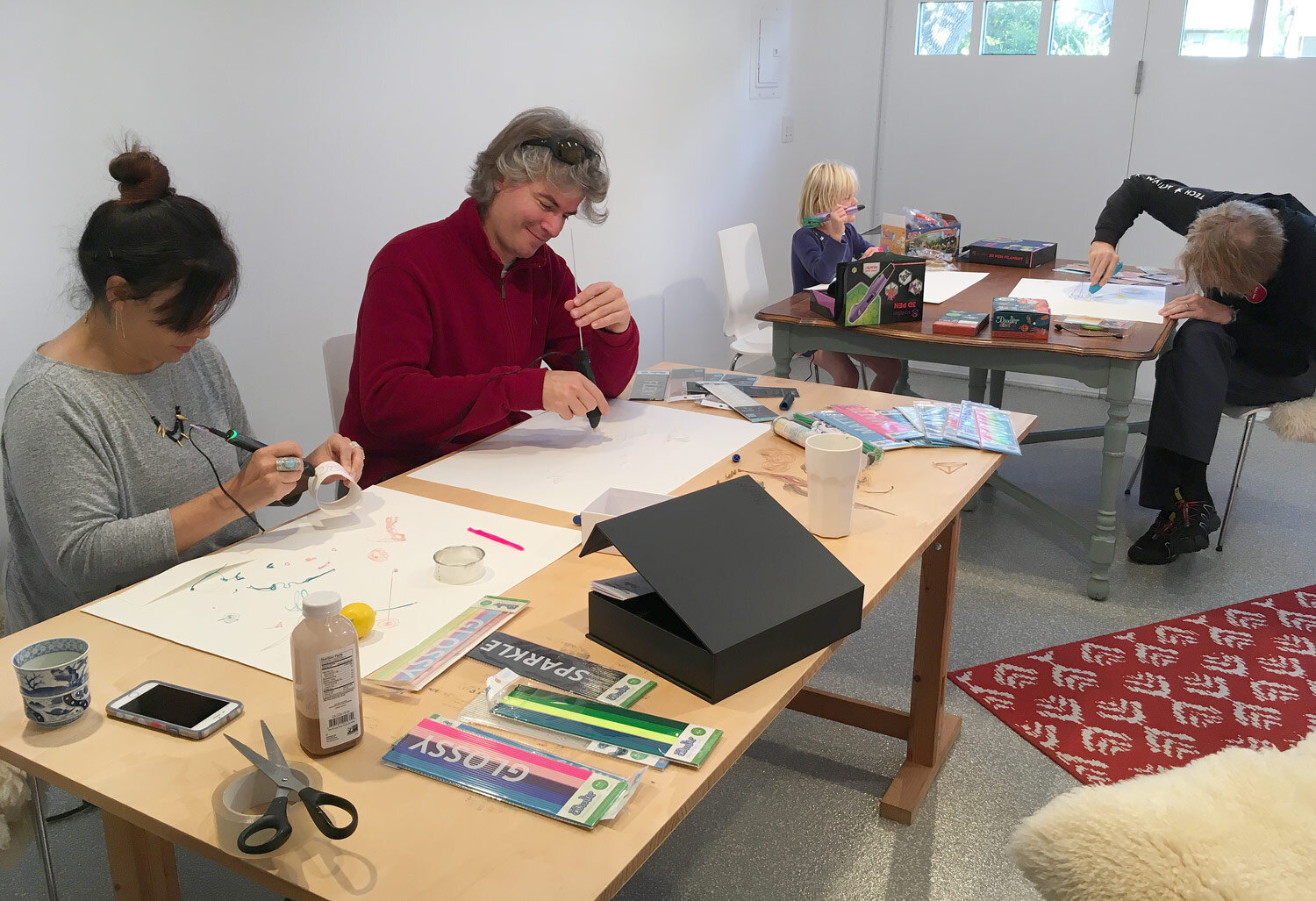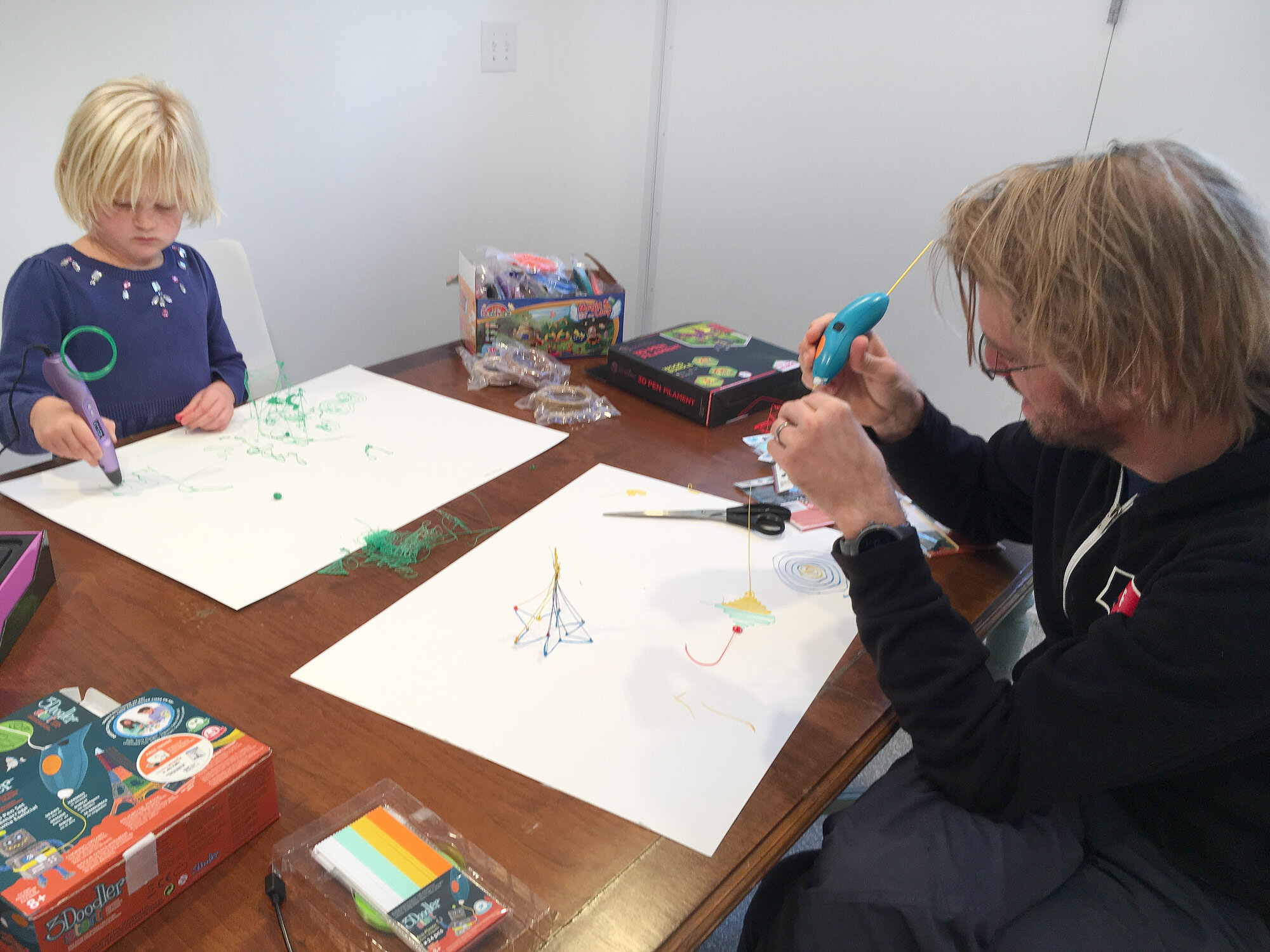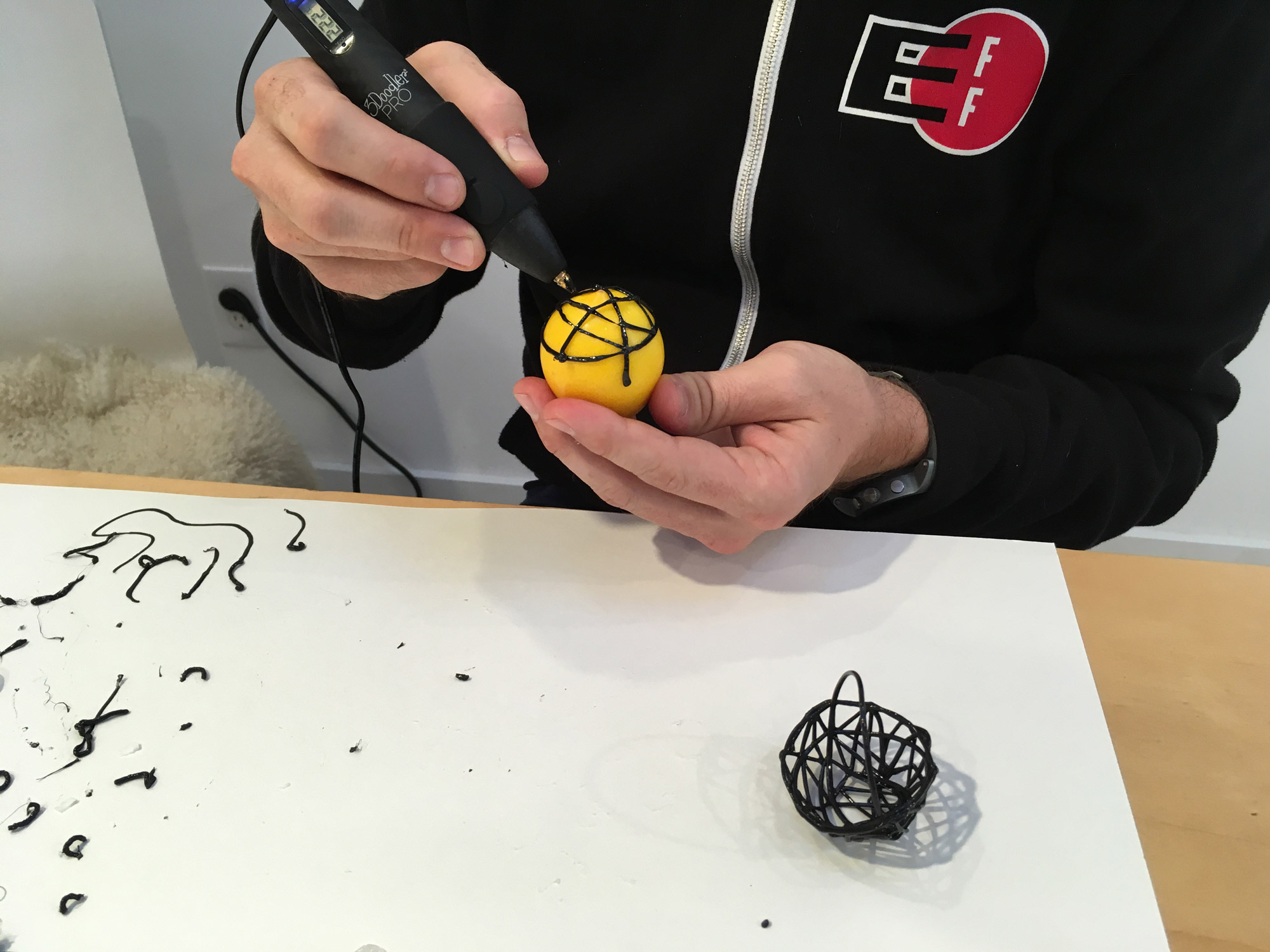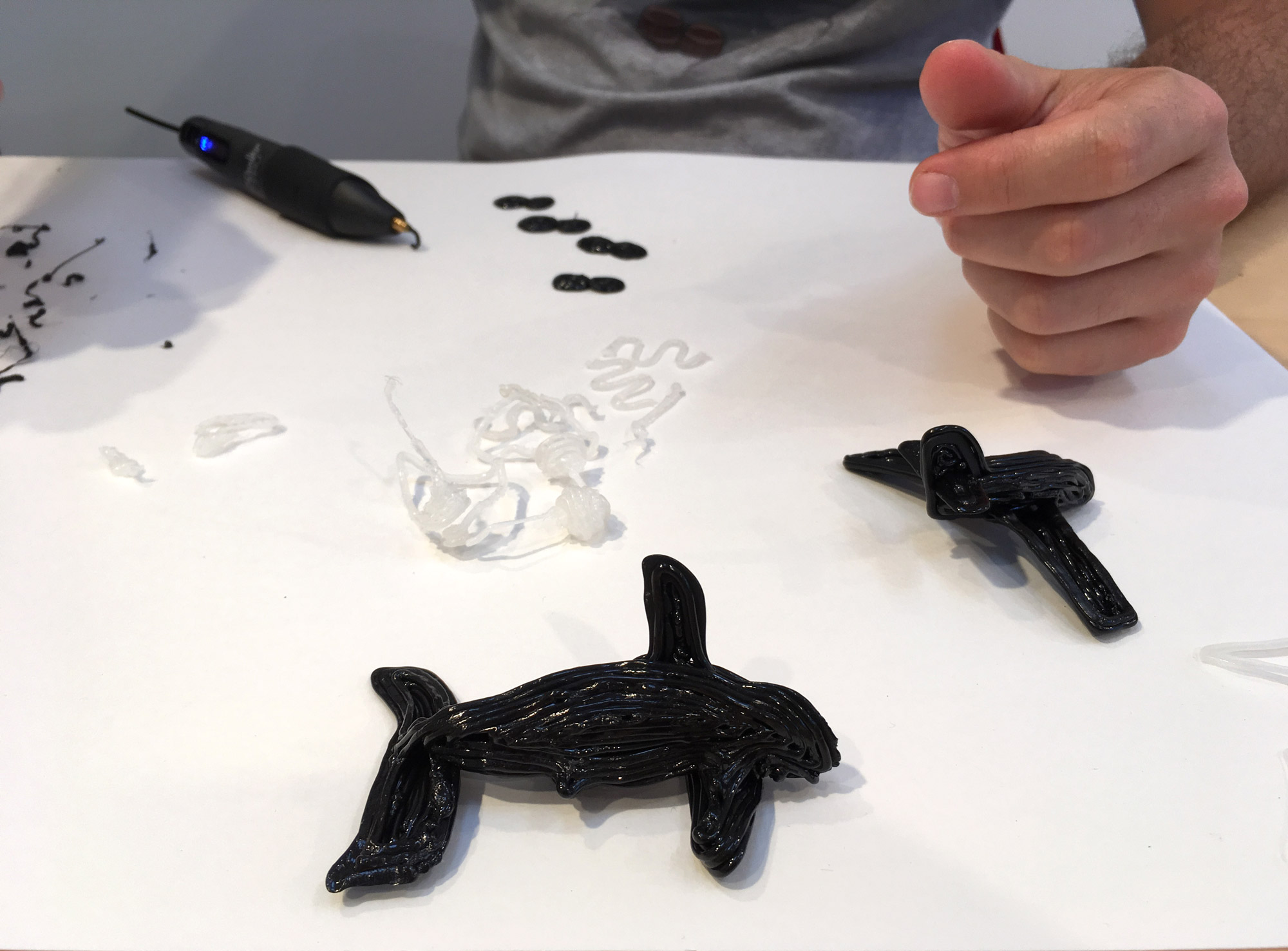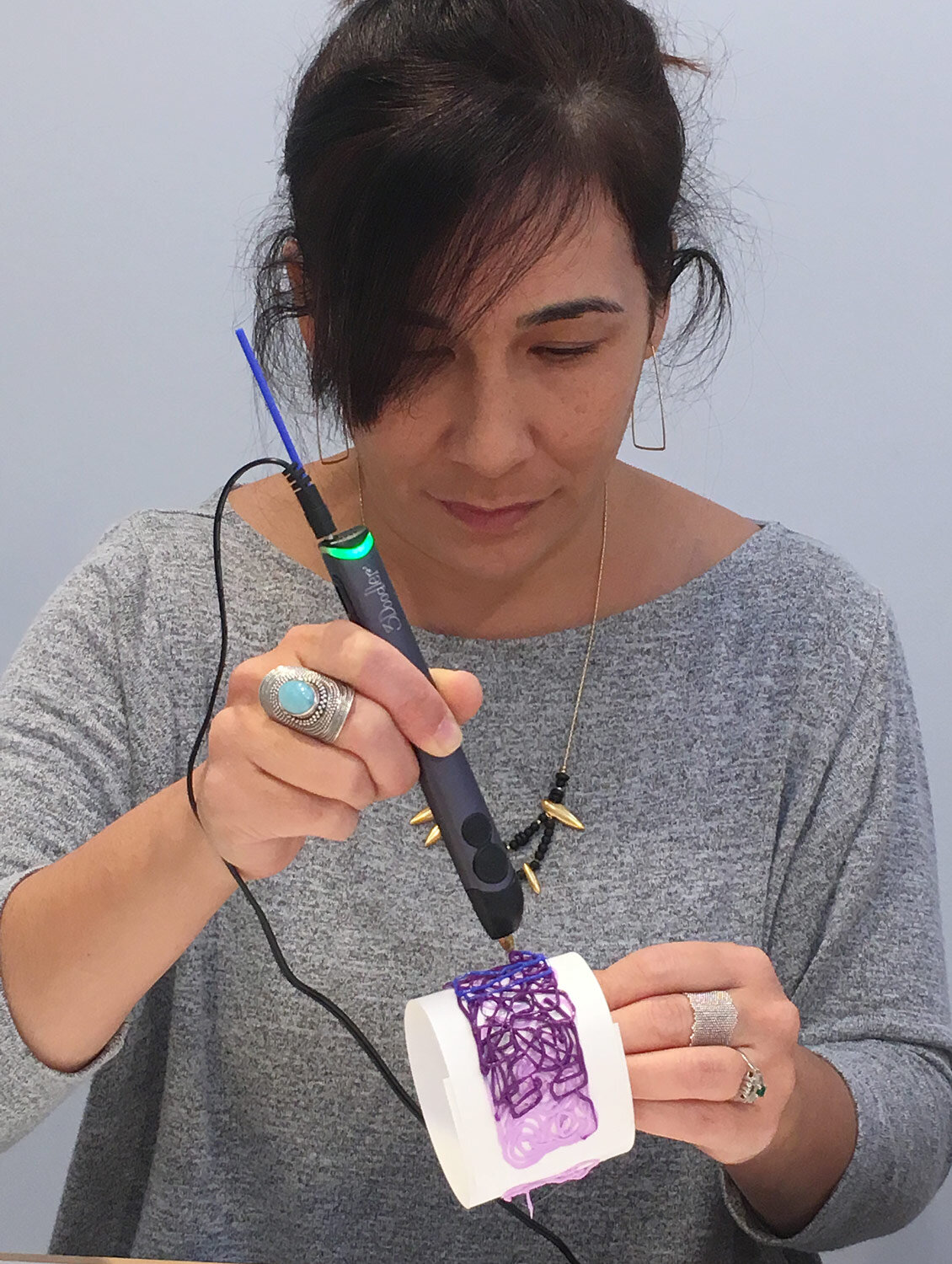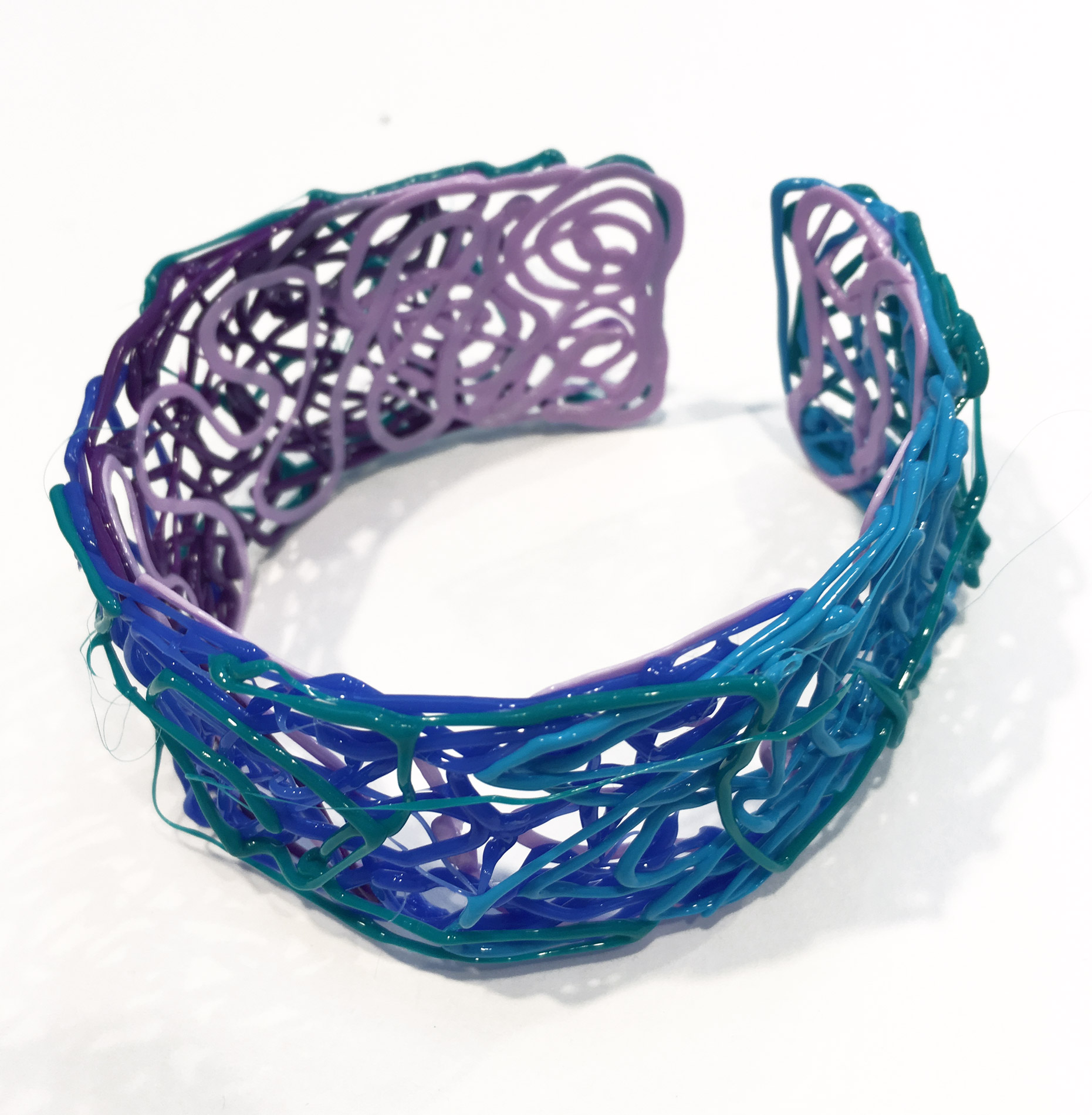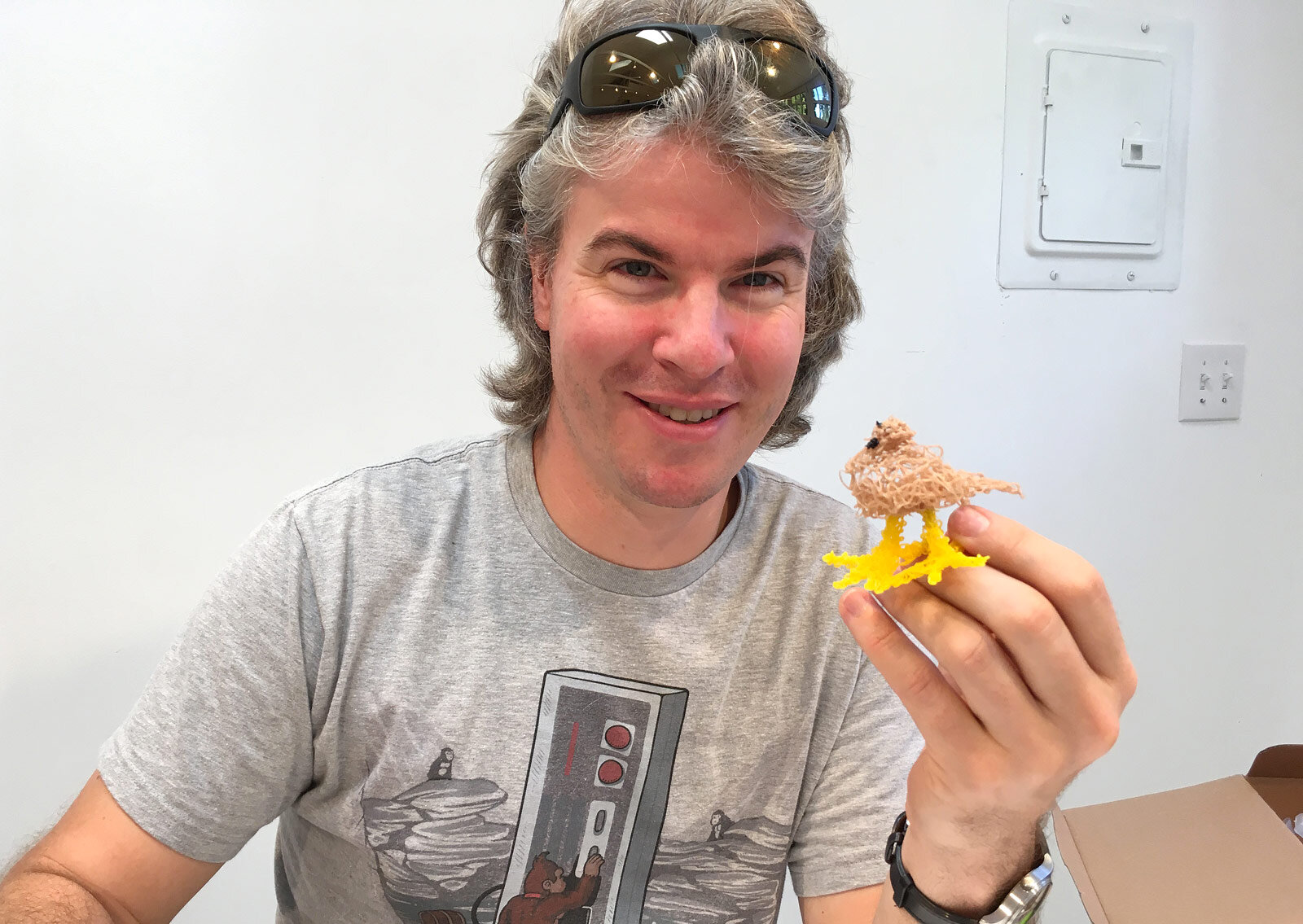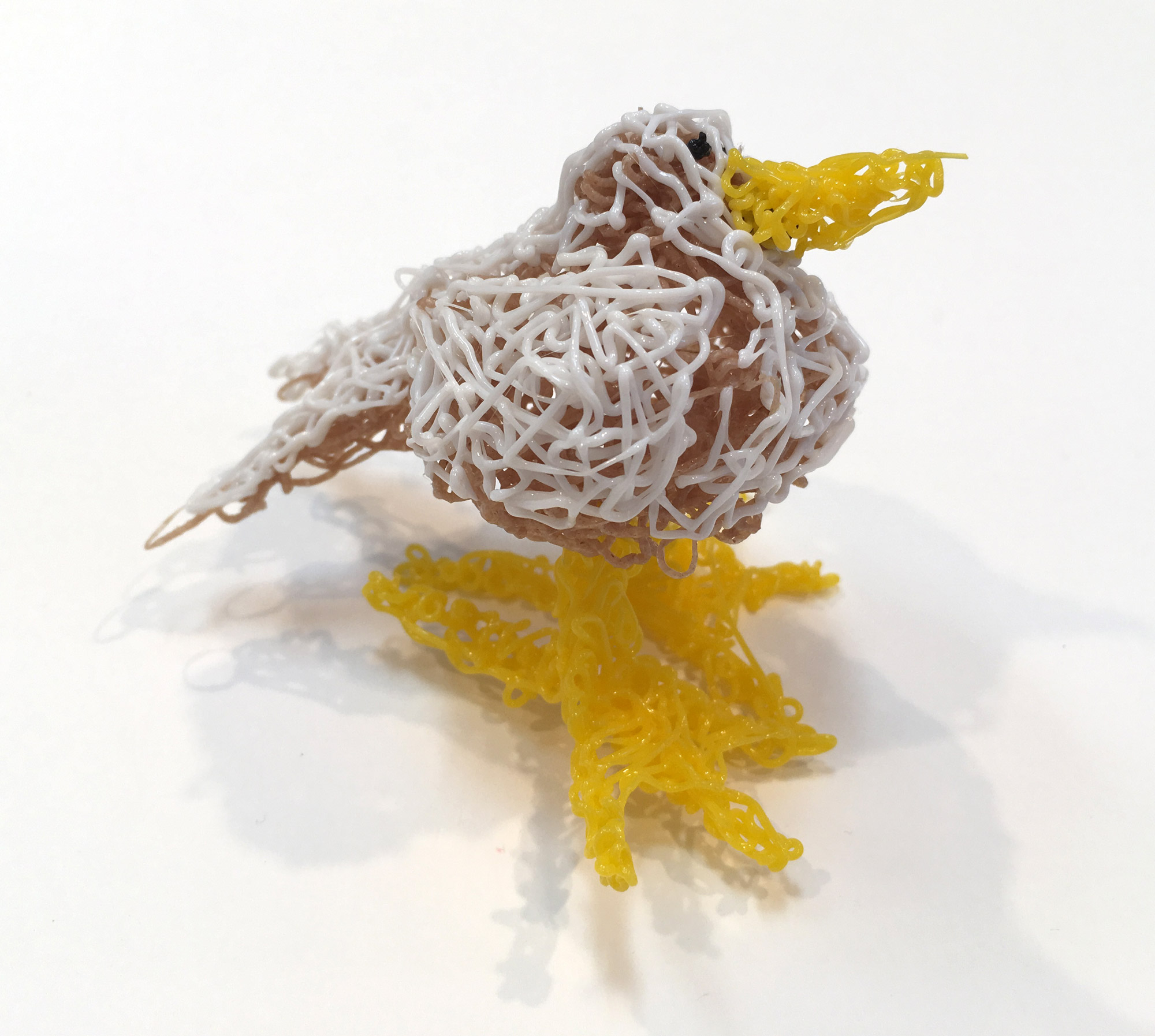“All so colourful/ Ganz schön bunt” - Workshop with Elementary school children, German American International School (GISSV) and Acton Academy of Silicon Valley, 2024
As part of my teacher training with Breathe for Change I designed this workshop incorporating elements of mindful movement, breath work and Social Emotional Learning into the creative experience with “Belonging” being the guiding theme.
We first looked at a colorful flower bouquet and students observed with all their senses how all these flowers are different in so many ways - color, size, number, shape and position of petals, smell, texture, surface etc… Students could also observe that the more diverse and colorful the flowers in the bouquet the more interesting and beautiful it appeared - just as they as a group consist of many very different individuals, with their uniqueness adding to the livelihood of their group. After some flower related mindful movement they filled out a “care instruction” for themselves - envisioning themselves as flowers and reflecting on their character traits and needs. They also made a first sketch of their flower. This was followed by painting this flower, exploring and experimenting with a variety of techniques - from ink and watercolor to oil pastels and pencils and even using three dimensional elements. Cutting out their flowers also trained their fine motor skills. Together we arranged all the flowers to a beautiful group bouquet on a big poster.
Anni Albers inspired Lego Printing at Acton Academy Silicon Valley, Redwood City 2023
While learning about immigration to the US and US citizenship I introduced a group of 1st to 6th graders to the life and work of Anni Albers. After creating some designs on graph paper just like Annie Albers, they got to transfer these to a Lego base plate using triangular Lego tiles. They then explored the different variations possible with their designs in terms of orientation, symmetry and color.
“You are fabulous!” - Drawing, Printmaking and Typography, grade 6, GISSV 2021-2023
This project evolves over many weeks and incorporates many different techniques. As a cross-curricular project it takes inspiration from the fables covered in German lessons.
At the beginning students are introduced to a variety of graphical techniques with a focus on textures. Students draw, print with different materials and explore the technique of frottage on the school grounds. In this context they are also introduced to the work of Max Ernst. All their results are their materials to be used in the following collage featuring their own personal fable animal, their totem, their mystical creature. What can this creature do for them or help them with? Which of their own passions, characteristics or needs are reflected in this creature? We also look into art history and explore mythical creatures through the centuries and cultures, from the sphinx to dragons, angels and hippogryphs. In cooperation with the German class students then write a short text or story introducing their fabulous creature.
This brings us to the next topic: books and typography. Students learn about the history of writing and copying books and about medieval initials used in precious books hand written and painted in monasteries. We also learn about the invention of book printing and the development of different font types and explore the expression and information inherent in different fonts. Based on this, students choose a capital letter in a specific font that they feel reflects the character of their mystic creature and enlarge this by hand, learning to pay attention to the proportions and forms of all the details of this letter. They then take inspiration from the medieval initials and design their own for the publication of their fable or story.
It all comes together in a small publication, combining the student’s fable creatures, their texts and their initials.
Nature Studies, grade 7, 2021-2023, GISSV, Mountain View
Learning to draw from nature is learning to see and learning to understand. Students closely observe objects from nature - like corn on cobs, dried leaves or seed pods, understanding the different patterns and textures of nature while trying to capture them in a drawing. Students also learn how to use shading to achieve a three dimensional effect to highlight the shape of their object and its details.
Personal Growth Mindset Posters, grades 5-7, 2022, GISSV, Mountain View
Introducing many students to the concept of Growth Mindset at the beginning of the school year they first got to choose three different aspects that were most important or difficult for them personally. After learning how to draw the outline of a head profile they individualized this drawing to represent their own head, filling it with their chosen aspects of Growth Mindset and finally illustrating it with personal examples - areas where they had proven a growth mindset to overcome challenges or where they would like to grow in the future. This poster should fit in their binder to serve as their individual motivational poster of the course of the school year.
Asian Ink Painting, 5th grade, GISSV, 2021-2023
Introducing the 5th graders to Asian ink painting as it is a perfect opportunity to teach them the importance of brush control and movement so quintessential for this technique. We start out with looking at Chinese calligraphy, exploring the different brush strokes involved in writing the character for “water”. Just like Chinese calligraphers one can observe writing with water on the ground all over Chinese cities the students then practiced the different strokes by writing “water” with water on the pavement. After that they had a chance to look at an original flower and bird ink painting. Following an online tutorial by a Korean artist they learned how to paint bamboo, again paying attention to their brush work, but now also adding the different possibilities of using more or less ink and water on their brush and trying out different compositions. Finally they also explored the different textures of a dry brush versus a wet brush in landscape painting. Besides emphasizing the different possibilities in utilizing different brush strokes this lesson also serves as an opportunity to introduce students to East Asian art.
Comic, grade 5, 2021+ 2022, GISSV, Mountain View
While students in 5th grade finished reading “Hoot” by Carl Hiaasen in English we started to work on our Comic unit. After students got introduced to some history of comics they learned different techniques on how to draw comic characters and tried these out. Analyzing their own favorite comic books for depiction of different emotions and character traits was followed by practicing drawing comic faces with different facial expressions and varying features. We then proceeded to develop the “Hoot” characters, taking clues from the text. This was followed by the analysis of some scenes from the book, focusing first on the main aspects of the plot and how to break it down into five to seven steps and second on speech, thoughts and other forms of text the students could use in their short comic. The challenge was to sum up the scene so that its content would fit into a short six panel comic, using different perspectives and frame sizes/ shots, different forms of text typical for comics and other characteristic elements of this medium.
Linocut, 8th grade, GISSV, Mountain View 2022 and 2024
Students in 8th grade were introduced to multicoloured reduction prints, using soft printing blocks. They first made different square designs, considering rapport pattern designs, then transferred the chosen design to a soft printing block. They printed the different colors of their design, cutting away layer after layer for the different colors, creating different versions of their design by rotating the printing block and/or choosing different color schemes.
Triangle-Power : Architecture in 6th grade at German International School of Silicon Valley (GISSV), Mountain View, CA, 2022 + 2023
The curriculum for 6th grade includes a unit on architecture, with focus on exploration of material. I chose to introduce the students to the principles of frame or skeleton construction showing them traditional and contemporary examples, ranging from medieval frame construction in German cities to today's way of building in their current location in California. As opposed to this students also learned about solid construction and the reasons why different types of constructions developed historically in different regions. They learned to distinguish between the two construction methods and identified pros and cons of them.
During our practical exploration the student learned the static basics of a triangle used in many truss constructions of bridges and towers. Training their fine motor skills they rolled newspaper into thin rolls and connected these into squares and triangles finally connecting these by tape to construct modules. The modules could then be stacked to build larger structures. Together they experimented with different forms they could build from their basic modules and constructed towers, gates and walls. Students experienced that architecture is teamwork and precise measurements and focus on exact work are key to a straight, durable and precise outcome. The wall was finally used as a display to showcase the results of their painting unit. Due to high winds outside they also learned to tackle the possible problems and limitations of this system by shortening the height and stabilizing it with weights at the bottom. Nevertheless it was intriguing for everyone to turn as flimsy a material as newspaper into a functional architectural element.
During the following year the students decided to build a circular structure for the end-of-year exhibition and used this to present the results of their painted paper sculptures.
Sculpture, 6th grade, GISSV, Mountain View, 2022
After painting cardboard the students cut out different shapes and stacked them together, experimenting with structure and balance. They took photos of their final results and using photo editing software inserted them into a landscape or urban setting - imagining their objects in a different scale in public space.
BodyBuddies: 5 week sculpture and painting Art project at GISSV, grades 5-8, Mountain View, 2021+ 2023
After more than a year of social distancing and lots of online instruction, classes 5a, 5b, 6a, 6b, 7b and 8a worked on the art project “BodyBuddies” during their last five weeks of school. They were introduced to and inspired by the works of Henry Moore, Wilhelm Mundt, Nikki de Saint Phalle or Rebecca Horn, but especially Franz West. Using recycling materials like crushed paper and other packaging material they fully engaged - and immersed themselves in the very physical and sensory process of crushing, sculpting, taping, painting and presenting sculptures that relate to their body: objects to hug, carry and interact with. Class 6a also designed the posters for the upcoming public art installation. One student after the other - nearly one hundred students in total - placed their finished sculpture on a meadow in Whisman Park, Mountain View, together creating a communal art installation in public space.
In 2023 in their painting unit students were introduced to different techniques of paint application to be used on their sculptures. They decided to present their finished sculptures inside their architectural construction made out of rolled newspaper.
Art lesson: How migration is influencing art and design, 5th grade, ALTO International School, Menlo Park, CA, 2020
In their unit “Where we are in time and place” children studied different aspects of migration. In an introductory talk I presented various examples how migration had influenced the development of art and design throughout history. One example I presented was the migration of former Bauhaus students and teachers to Israel and the US in the 1930s and 40s who had a tremendous influence on the art and design development in their new home countries. I then took it to a personal level and focused on the life and work of Annie Albers who immigrated from Germany where she was teaching at the Bauhaus to the US in 1938 and who was famous for her weaving and pattern design. Inspired by Anni Albers designs based on basic checked paper, the children then got to design their own patterns, experimenting with the different resulting shapes and foreground/background relations. They were then ask to choose a detail using a mask for the upcoming enlargement. This design process and the enlargement introduced them to and followed up on the geometry they were currently discussing during their math lessons, such as different types of symmetries, axis, scale etc..
The universal use of patterns throughout history of mankind was the focus of a second presentation to provide further depth and understanding of the connection between the unit topic and pattern design. After that the students were asked to document patterns in their homes that reflect their own family´s heritage, migration or travel history. Besides taking photos the children drew the patterns and collected information about it, like origin, symbolism, meaning, technique, etc..
The photos were then cut and used to create a “patchwork” pattern with their previous Annie Albers inspired pattern design, creating their very personal pattern of migration and identity. Due to the situation under Covid-19 restrictions I had to teach this entire class remote with the help and support of the homeroom teacher and a volunteer.
Art lessons: 3rd grade: Paper costume and set design, ALTO International School, Menlo Park, CA, USA, 2018/2019
During their unit “How we express ourselves” 3rd graders were working on a theater project with their teacher. In preparation to the upcoming costume design I introduced children to the different ways how we express ourselves through our clothing and how this is relevant for costume design. This was followed by an introduction to set design with a particular emphasis on how paper gets used in these contexts. Students then got to try out paper as a material for a head piece/ hat design exploring different ways how to manipulate the material by folding, crushing, bending or rolling. In a second step they created their own costumes for their play. After that we started working on the set design. The students colored big pieces of paper that they cut into geometric shapes, incorporating their newly learned geometry skills into the planning. These basic shapes were combined to create the scenery for the set.
Workshop: An Introduction to the 3D Pen
Aimed at adults this 3 hour workshop gave a short introduction to different 3D pen models and the different plastics and other materials used. During this hands-on workshop the participants had the chance to try 4 different models, learn about their pros and cons and managed to realize their own first 3D objekt with them.
Alto Art Club at Alto International School, Menlo Park, California
I taught the art club of Alto International school from August 2016 to June 2017. Having teaching experience with under- and prost graduate art students and adults, this has been a fantastic opportunity to work with kids in the middle and high school for the first time and it has been an inspiring learning process!
We started focusing on drawing in a wider sense. We talked about drawing as a media for communication with ourselves and others and looked at different fields where drawings are used. After we tried to create different types of lines, group doodled, and played drawing games we focused on a major element of drawing that connects the line with its background: movement. Because it´s the movement that makes it possible for a brush, pencil or the like to leave traces or create a line. We tried drawing with different parts of our body and then started to experiment with our own self build drawing devices. In a next step we took it a bit further, trying to construct a chain reaction of objects that would leave traces and produce “autonomous” drawings, inspired by the video “The way things go” by the artist duo Fischli and Weiss. While engaging in our own experiments we always also looked at related work done by other artists or designers, gaining some insight into contemporary art practice. We continued working collaboratively on these big sheets of paper, later using them as material for sculptures and partly for our stop motion film experiments. These can also be seen as another connection between drawing and motion. Unfortunately they could not be completed due problems with technical equipment. Finally many of our drawings, drawing devises and experiments were combined in the construction of "Spork-Tower" that served as a sculptural pedestal for the presentation of a slideshow at the end of the school year. Working process oriented, the focus in the art club was not on producing a presentable, “nice” looking finished product but rather to foster creativity, problem solving and risk taking - among others. Wherever possible, aspects from other fields like design, engineering and science are incorporated - like thinking about the physical principles used in the Rube Goldberg machine, staring in “The way things go”. The Alto Art Club was a place to get in touch with artistic and conceptual thinking, artistic freedom, self expression and a home for crazy ideas.
Private studio art lessons for children age 6 to 8
In the inspiring setting of my art studio I hosted an art class for a small group of children age six to eight that focused on the introduction of different materials and techniques in 2D, starting with nature studies using pencil and color pencils, also covering portrait and perspective. Due to the small class size I could focus on individual needs and interests. Later I introduced the children to watercolor and ink painting. We ended the course with an introduction to pastels.
Art lesson: Positive/Negative - Exploring the human face in clay and plaster, ALTO International School, Menlo Park, Kindergarten class 2015/2016
During the unit “How we express ourselves” Kindergarten students had already learned a lot about art and how to draw a self portrait with their teacher. Now I wanted them to explore the next dimension. As the art covered in class so far had been two dimensional I wanted to introduce students to sculpture and clay and plaster as materials in this context as well as the technique of mold making. To study the anatomy of the human face in 3D I asked the children to pay attention to the parts of their face that stand out and those that bend inward. After exploring their own face with their hands I introduced the concept of positive-negative and asked them to imagine what a piece of clay would look like if they pressed their face into it, modeling a negative of a face with their hands into the clay. We then poured plaster into the resulting clay mold and watched and touched as the plaster reacted, heated and hardened. Un-molding the faces by removing the clay revealed the surprising “positive” results. Once fully dried the students colored the “masks” with watercolors.
Art lesson: Preschool art project: 2D to 3D: Exploring paper as material, ALTO International School, Menlo Park, CA, USA, preschool class 2014/2015
After the children had colored paper with their teacher, using a variety of techniques I then showed them how they could cut, bend and twist this paper and experiment with the different possibilities, turning a simple sheet of paper into an intricate little sculpture. The kids got very creative and explored their results as wearables.
Workshop: Drawing as creativity technique
I have taught this workshop on creativity and ideation process several times, varying in lengths and intensity: from a one week intensive class to art students (publication pdf here) or a one day workshop to art educators to a short three hour power class to adults without any artistic background. The images below are from a one day workshop organized by the Association of German Art Educators in Berlin in 2013.
Course description:
Focus of the workshop is not the esthetic or perfect lifelike drawing but the process of drawing as means of generating many new ideas, because: “In order to have one good idea, you have to have many ideas.” (Linus Pauling). Being creative is often associated with an artistic talent, a brilliant genius. Instead we see it as a potential inherent in every person that can be activated, a skill that can be learned and practiced. Drawing is a perfect tool to do that because it links the gestural with the spiritual and in a way exceeds language, goes ahead of it or beyond it, since at the beginning we often only have a diffuse image or feeling and not yet the ability to describe our interest clearly with words. Thinking in images works well here and even books on creativity targeting business managers contain many drawings and advice the reader: “Make a drawing.” In order to get a realistic image of an existing person or object we could just take a photo, there is no need to make a drawing. But drawing - whether by hand or on the computer - is the nearly the only possibility to visualize things that do not (yet) exist and therefore it is often the best tool to visualize ideas. But it is also a very good tool to generate those ideas. In the workshop we start out with a more analytical approach to broaden our base of knowledge about our object from which we can then start to create new ideas, combinations and variations. With time and practice we develop wider - and wilder - ideas. From the initial object that served as a spark manyfold individual ideas evolve - ideas for new products, designs or art projects. A short overview over some common creativity tools that can also be combined with drawing round up our session.
Workshop: Objectlike Drawing, University Greifswald, Department of Art Education “Caspar-David-Friedrich-Institut”, Germany, 2006 and 2007,
During the initial lecture students got introduced to different artistic approaches by artists, whose work - while being three-dimensional - can be seen as drawings: the wall installations of Heike Weber, sculptures and installations by Stefan Sous or Philip Loersch or the more conceptual or performative work of Erwin Wurm - among others. All of these works exceed the traditional understanding of the medium drawing. The linearity of the drawing connects with space, becoming three-dimensional. The lecture was followed by a practical one week long workshop where students had to “build” their own drawings. Besides using wire mesh and papermaché students had to find their own materials and started out experimenting with different materials and found objects, like cables, wire, textiles, household objects, industrial parts and other flotsam, exploring the linear and structural qualities and potentials by further connecting, combining, manipulating, reducing, fragmenting or adding on to these materials to “draw” structures, textures, surfaces, landscapes and spaces. The three-dimensional work was accompanied by occasional experimental drawing exercises.
(Liebe ehemalige Studenten und Studentinnen - falls Ihr die Veröffentlichung Eures Namens unter Eurer Arbeit wünscht, setzt Euch bitte mit mir in Verbindung.)

















































































































































































































